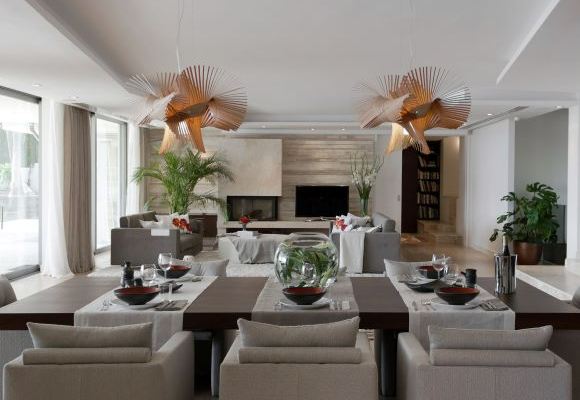Dining room lighting is designed to offer a blend of both form and function, bringing brightness and openness to a space, while imbuing it with distinct style and design that doesn’t overpower. We’ve put together a selection of our top lighting picks to anchor your favorite dining area in a variety of covet-worthy styles.
Modern Recessed Lighting

7 Lighting Ideas to Brighten Up Your Favorite Dining Space

Kitchen Island Lighting in 4 Simple Steps
Smart planning is the key to installing supremely functional and visually delectable kitchen island lighting.
Use recessed lighting to bright up your modern home
About Recessed Lighting Recessed lighting, by definition, is lighting that recedes into a surface—ceiling, wall, or floor— and resides flush with that surface. Modern LED recessed lighting is visually subtle, visible only via the recessed lighting trim that gives the light source its finishing touch. Contemporary recessed lighting can play a key role in many interior schemes, capable of providing either primary or ambient and task-related lighting, Versatile and amenable to a range of applications, designer recessed lighting is a fine option for a number of scenarios, and if you're considering a designer recessed light installation for your home, it may be helpful to consider the following questions:
Where does modern LED recessed lighting look best?
While contemporary recessed lights, sometimes referred to as can lights, can be installed most anywhere, recessed ceiling lights tend to look better in some places more than others. As primary lighting, LED can lights look best in narrow or awkward spaces in which other types of lighting are either too obtrusive or simply won't fit. A hallway, for instance, is an ideal place for can lights, where designer recessed lighting trim can add both practicality and elegance to a nondescript area. Other spaces—a bathroom with a low ceiling, or a tiny sleeping loft—can also greatly benefit from modern recessed lighting over other kinds of modern lamps.
In larger spaces, a modern recessed light arrangement along the perimeter of the room—which may not be properly illuminated by the primary light source—can be a smart subsidiary lighting solution. LED recessed lighting is also excellent for highlighting attractive architectural details in a room or space, or for or drawing attention in a subtly way to a beloved object or a collection of art. But remember that the function of subsidiary lighting is not to detract from the primary light source, but rather to work in tandem with it. So, it's important that, in these instances, LED can lights don't call too much attention to themselves, but work in harmony with the overall lighting scheme of the room.
How many modern LED can lights is the ideal number?
Obviously it's impossible to pinpoint an optimal recessed light number for your specific project, but in general, there's no reason to assume that more recessed lights are always better. Recessed lighting can dispense plenty of bright light, so don't aim for quantity versus quality. LED recessed lighting with thoughtfully chosen recessed lighting trim—installed at proper intervals—is the best way to get the most from your contemporary can lights.
How important are recessed lighting dimmers?
Dimmers are always very important, irrespective of the type of modern lighting you choose. When it comes to LED recessed lighting, dimmers become even more imperative because the light emitted can sometimes be harsh and unflattering. Foregoing dimmers is never a good idea because it limits your options, at best, and can undermine your other interior design efforts, at worst. So, the easiest way to give yourself flexibility and versatility with any modern lighting installation is to include dimmers.


